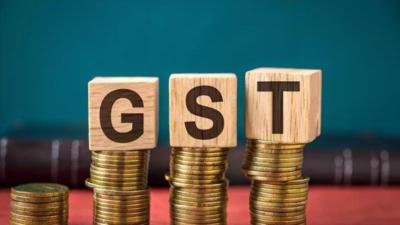
States are set to emerge as “net gainers” under the planned Goods and Services Tax (GST) rate overhaul, with collections including devolution likely to cross Rs 14.10 lakh crore this fiscal, SBI Research has projected in its latest report.The study underlined that earlier rounds of rate cuts in 2018 and 2019 triggered a short-term dip of 3-4% in monthly revenues — about Rs 5,000 crore or Rs 60,000 crore on an annualised basis — but collections quickly rebounded, clocking growth of 5-6% a month, PTI reported.
Modi Govt Eyes Biggest GST Shake-Up Since 2017 With Two-Tier System, Promises Massive Tax Relief
The government has proposed replacing the four-tier GST structure of 5, 12, 18 and 28% with a simplified system of two slabs — 5 and 18% — along with a 40% levy on select items. Luxury and demerit goods will continue to attract a compensation cess ranging from 1 to 290%.Opposition-ruled states, however, have voiced concern and sought compensation, estimating post-rationalisation losses of Rs 1.5-2 lakh crore. SBI Research itself, in an August 19 report, had pegged the average annual revenue loss for the Centre and states at around Rs 85,000 crore.The fresh assessment, though, is more optimistic. “Our projections for FY26 indicate that states remain net gainers even after post-GST rate rationalisation. States are expected to receive at least Rs 10 lakh crore in SGST plus Rs 4.1 lakh crore through devolution, thereby making them net gainers,” it noted.The reasoning lies in the tax-sharing mechanism: half of GST collections are divided between Centre and states, and 41% of the Centre’s share is devolved back. As a result, about 70% of overall GST receipts accrue to states.Since GST’s launch, the effective weighted average rate has already fallen from 14.4% to 11.6% by September 2019. After the proposed changes, SBI Research expects the rate to settle at 9.5%.Citing evidence from 2018 and 2019, the report argued that rationalisation does not dent revenues over time. Instead, it leads to a temporary adjustment, followed by stronger inflows — adding nearly Rs 1 trillion in past episodes.“Importantly, rationalisation should be seen less as a short-lived stimulus to demand and more as a structural measure that simplifies the tax system, reduces compliance burdens, and enhances voluntary compliance, thereby widening the tax base,” SBI Research said.A streamlined framework, it added, would lay the ground for long-term buoyancy in revenues and efficiency in the broader economy.










